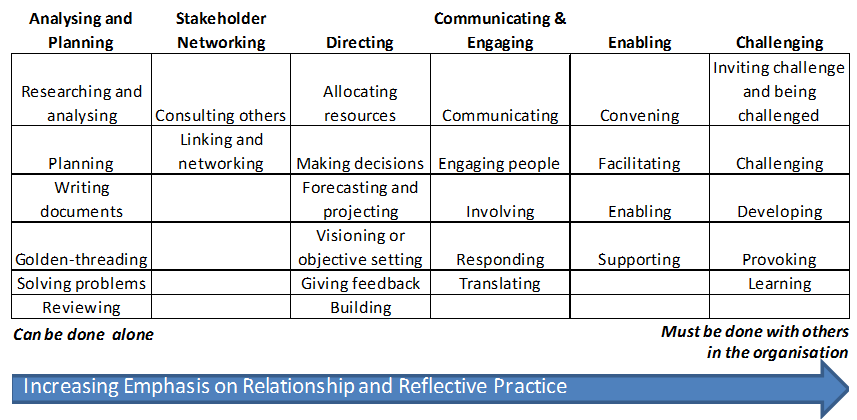Managers we come across in our work who are involved in the strategy process of their organisations are often curious to know whether their own approach is sufficiently ‘strategic’ and whether they could or should be doing it differently. This curiosity reveals a lack of awareness of how strategy is done elsewhere, something Gary Hamel referred to in 1997 when he wrote that “the dirty little secret is that we don't have a theory of strategy creation. We don't know how it's done."[1]
This article draws on Ashridge research with strategy practitioners (literally those who are conscious of being involved in the process of strategy) to help strategy practitioners to be more conscious of what they are already doing and understand what else they could be doing in order to make a bigger impact on the strategy of their organisation. A number of conclusions for strategy practitioners are presented at the end of the article.
The Research
The research focused around the question ‘What is your organisation’s strategy process and who is involved?’ Our aim was to uncover the range of activities and roles that strategy practitioners engage in when they believe that they are involved in their organisation’s strategy process.
The research involved 19 semi-structured interviews with strategy practitioners. Here, we defined strategy practitioners to be individuals who are conscious of participating in the strategy process (however perceived) within an organisation and excluded non-employed staff, such as consultants or non-executive directors. The sample interviewed consisted of respondents working in a variety of roles and organisations. The sample also included a mix of Private sector and Public/3rd sectors both in the UK and internationally.
The Findings
Individual activities mentioned by strategy practitioners have been grouped thematically under six high-level ‘activity labels’ which best describe the subset of activities and combine to create the Strategy Practitioner Activity Continuum (see Figure 1). This continuum outlines activities that move from being carried out alone (by an individual and without the need for involving others in the organisation) through to activities that are with others (requiring multiple participants and where the practitioner is dependent on the participation of others). It is important to emphasise that there is no judgement made on the appropriateness, helpfulness or impact of engaging in any of these activities, just that they were all the activities referred to in this research process. An additional point to note is that the activity labels simply describe a grouping of activities and do not represent ‘job titles’ as almost all of those interviewed were active in more than one activity. For example, strategic planners responsible for managing the formal processes of strategy in an organisation may be involved in ‘Analysis and Planning’ activities as well as those under the ‘Directing’ activity label.

Figure 1: The Strategy Practitioner Activity Continuum
High level findings
- The top three most frequently occurring activity groupings in order of frequency were
o Communication and Engagement
o Analysis and Planning and
o Directing
- A few practitioners talked about working across a broad range whilst most talked of using a limited range of activities. This may be because they are limited by their own sense of what activities they should, want to or feel able to be engaged in or are limited in some way by their contexts.
- None of the practitioners said they worked across the full range of activities.
- A key finding in this research is that practitioners require a high level of personal credibility and reflexivity to operate on the right hand side of this continuum. An example of this is a respondent who described one of his roles in the strategy process as the ‘agent provocateur’ to the board. It could be argued that anyone taking up such a position would need to be seen as credible and be reflective about their impact to enable effective provocation. Others talked about their role as ‘convening and facilitating conversations’, an activity which also requires considerable levels of reflexivity.
Implications for practitioners
This research suggests that there are a number of ways that strategy practitioners can have greater impact in their own roles:
- Get aware of what is driving your own and your organisation’s approach to strategy and how it’s done, and also what other activities are available to you so you can do more than ‘turn the strategy handle’. You may also need to be more conscious of who your key stakeholders are and what they expect of you in relation to your involvement in strategy.
- Get reflexive – be more aware of the choices you have as a strategy practitioner; make more conscious choices about which is the most helpful activity to engage in. Notice when you seem to be engaging in activities which may be reinforcing existing patterns of thinking or interaction, or when your work seems to go against the grain or invoke novelty.
- Get developed – get good at activities which you would like to ‘expand’ into to broaden your portfolio. For example, a recent client announced that his development focus was going to be to be able to credibly move across the continuum. This may mean, for example, developing facilitation skills to be able to build capabilities in the enabling activities. Developing strong relationships with others who can complement our own range of capability on the continuum is also an approach for those who truly believe that they will never be able to ‘get good’ at all the activities on the continuum.
- Get connected – with other strategy practitioners who work across the spectrum of strategizing activities to be able to make sense of how to extend one’s own range. These people may be already in your own organisation and involved in activities on the right of the continuum that have not traditionally been labelled as ‘strategy’, while others may be in other organisations.
Bibliography
Jackson, T. in the Financial Times (Thursday, April 24, 1997). ‘The Management Interview: Gary Hamel’
[1] Financial Times: Thursday, April 24, 1997, The Management Interview: Gary Hamel by Tony Jackson





